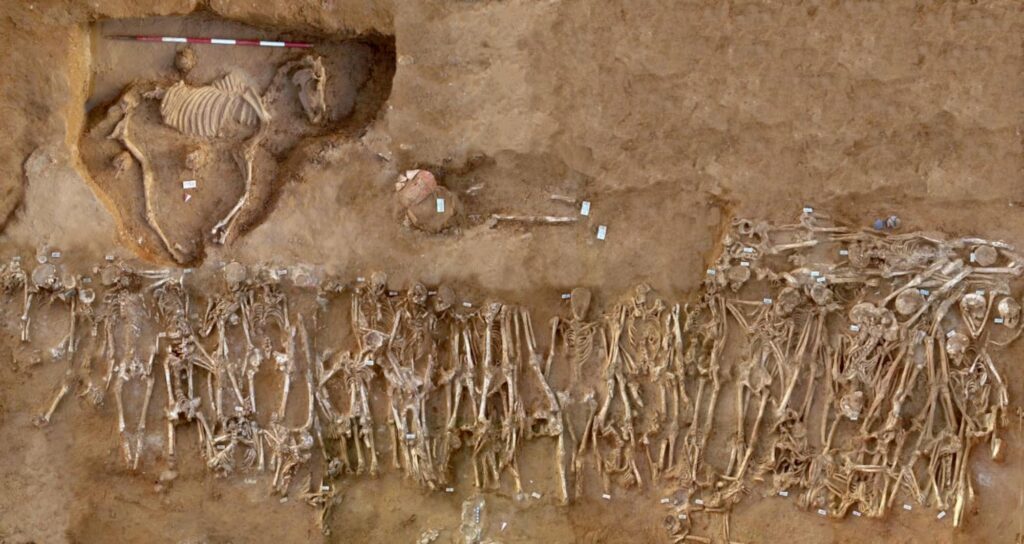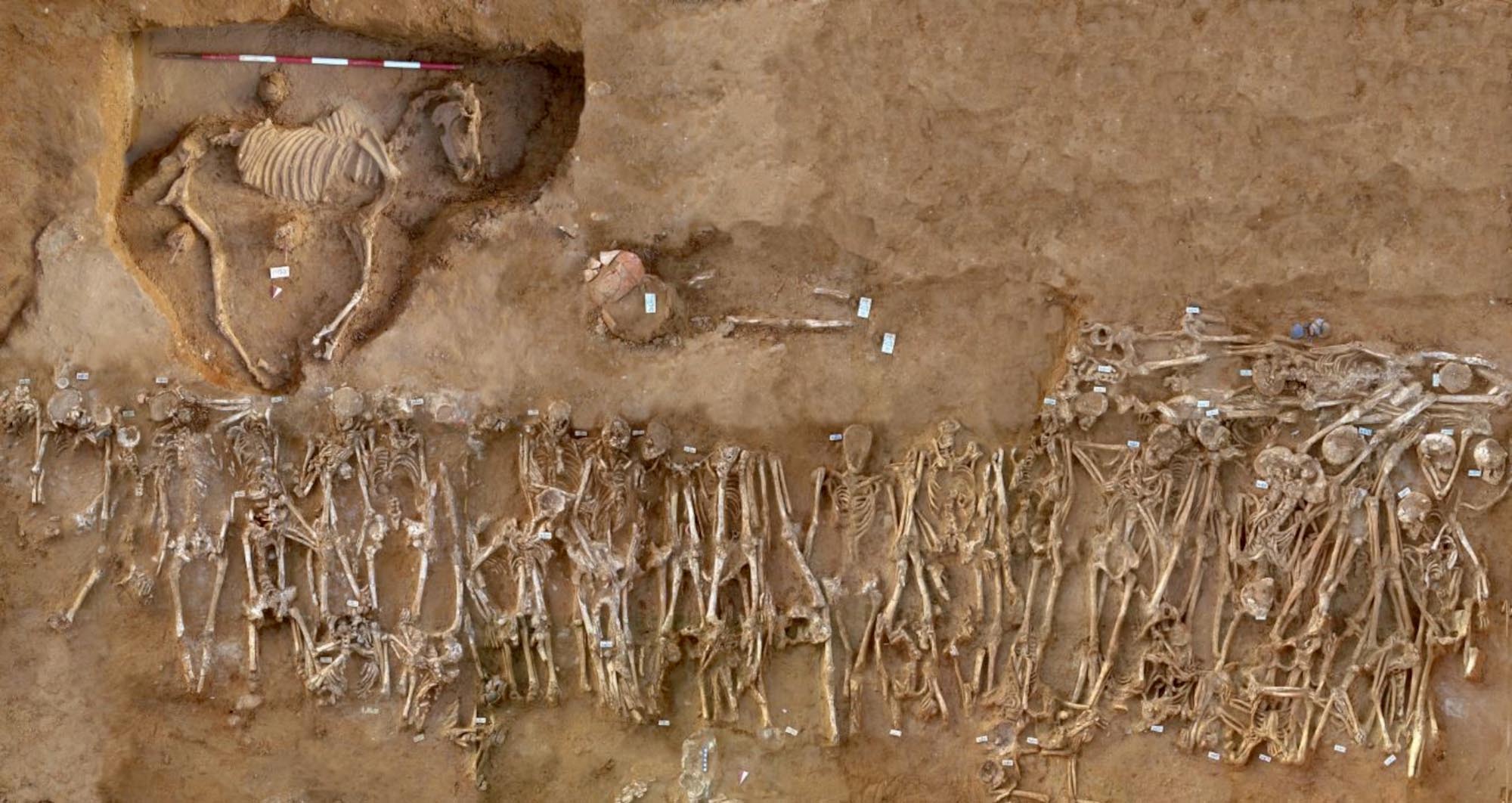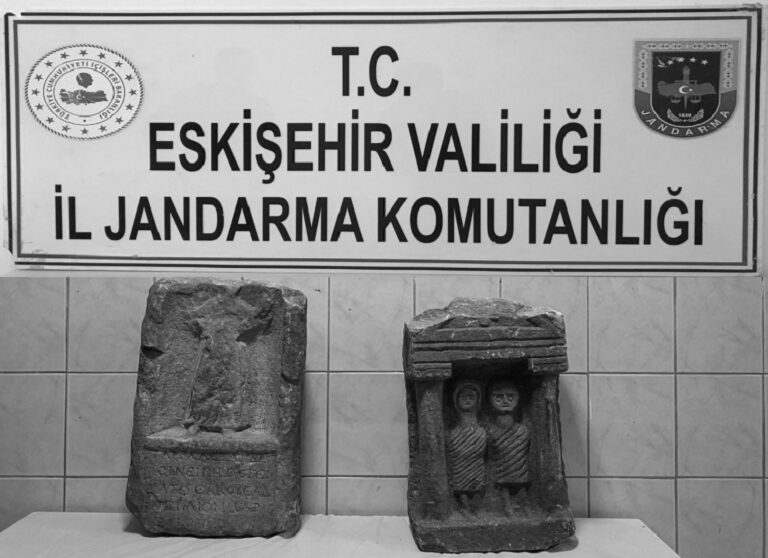Researchers have discovered that mercenaries may have helped Greeks battle Carthaginians in Sicily over 2,500 years ago.
DNA analysis of 54 bodies found in mass graves revealed that a decent proportion of the Greek soldiers who fought Carthaginians in the ancient city of Himera, in Sicily, were not Greek.
They instead originated from far beyond the Mediterranean, including the Caucasus, northeastern Europe and the Eurasian steppe, according to the study.
The First Battle of Himera, that took place in 480 BC, resulted with the Greeks completely crushing the Carthaginian forces of Hamilcar the Magonid.
Then about 70 years later in 409 BC, the Carthaginians returned for a second battle and completely destroyed Himera which was never rebuilt again.
The research was conducted by scientists Laurie Reitsema of the University of Georgia, Alissa Mittnik of the Max Planck Institute for Evolutionary Anthropology, Britney Kyle of the University of Northern Colorado, David Caramelli of the University of Florence, Ron Pinhasi of the University of Vienna and David Reich of Harvard University.
Reich said in a statement obtained by Newsflash: “The results make clear that Greek colonization in classical antiquity not only led to the spread of the Aegean peoples throughout the Mediterranean, but also enabled a broader cosmopolitanism.
“While the Sicilians of the 1st millennium BCE were largely drawn from the local population descended from the Bronze Age, the inhabitants of Himera not only have Aegean and local Sicilian ancestry, but also come from much further afield.”
Mittnik explained that the genetic diversity of the soldiers in the First Battle of Himera even exceeded that of the civilian population of the ancient city.
She added: “We were amazed to find that many individuals among the soldiers of the battle of 480 BC descended from far beyond the Mediterranean, such as the Caucasus, northeastern Europe and the Eurasian steppe, a region known in ancient times as Scythia.

“Such extreme genetic diversity in a single burial context is unprecedented for this period of classical history.”
University of Georgia archaeologist Reitsema and her team studied the non-radioactive isotopes of elements such as strontium and oxygen found on the site.
As such elements are ingested with food and water and then get built into a person’s bones and teeth, the team was able to determine the soldiers’ place of origin.
Reitsema said: “Many of the soldiers of 480 BCE had isotopic signatures outside of Sicily, suggesting that they only traveled there as adults.
“When we compared the isotopic results with the genetic results, we found a striking correlation: all soldiers with genetic origins outside of the Mediterranean were also clearly isotopically alien.
“With the genetic data, we now know where they were likely born.”
Britney Kyle of the University of Colorado added: “The genetically and isotopically ‘alien’ individuals were buried together in a series of larger mass graves, showing that their special social standing was recognized by the survivors who buried them.
“Perhaps they were identified by the members of the same units they fought for.
“Historical sources also describe that Syracuse, one of the cities that came to the aid of Himera, employed a large number of mercenaries in its army.
“It is incredible, such a clear example of how genetics and isotopic analysis corroborate and enrich the historical accounts and archaeological evidence.”
In contrast, the mass grave from the Second Battle of Himera where the Himerans lost after their allies failed to send supporting troops in 409 BC, showed no foreign origin of the fallen soldiers.
Caramelli said: “Most of the soldiers in the later battle were descendants of indigenous Sicilians and migrants from the Aegean.
“Interracial marriages seem to have been the norm in Himera.”
The research was published in the peer-reviewed multidisciplinary scientific journal PNAS on Monday, 3rd October, 2022.
To find out more about the author, editor or agency that supplied this story – please click below.
Story By: Georgina Jadikovska, Sub-Editor: Marija Stojkoska, Agency: Newsflash
The Ananova page is created by and dedicated to professional, independent freelance journalists. It is a place for us to showcase our work. When our news is sold to our media partners, we will include the link here.




